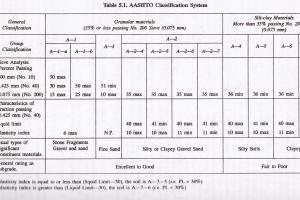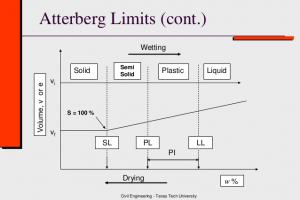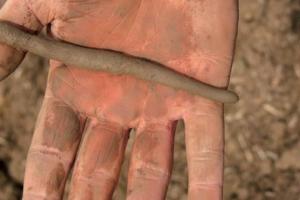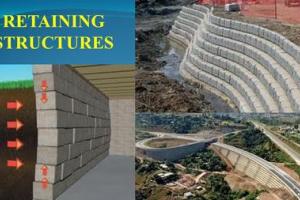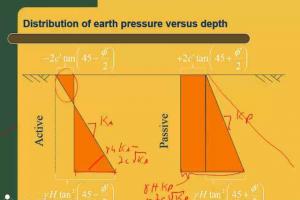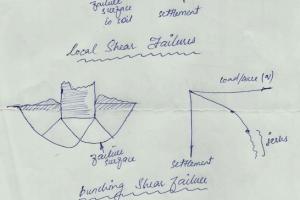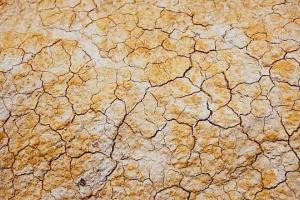AASHTO Soil Classification System - AASHTO Chart
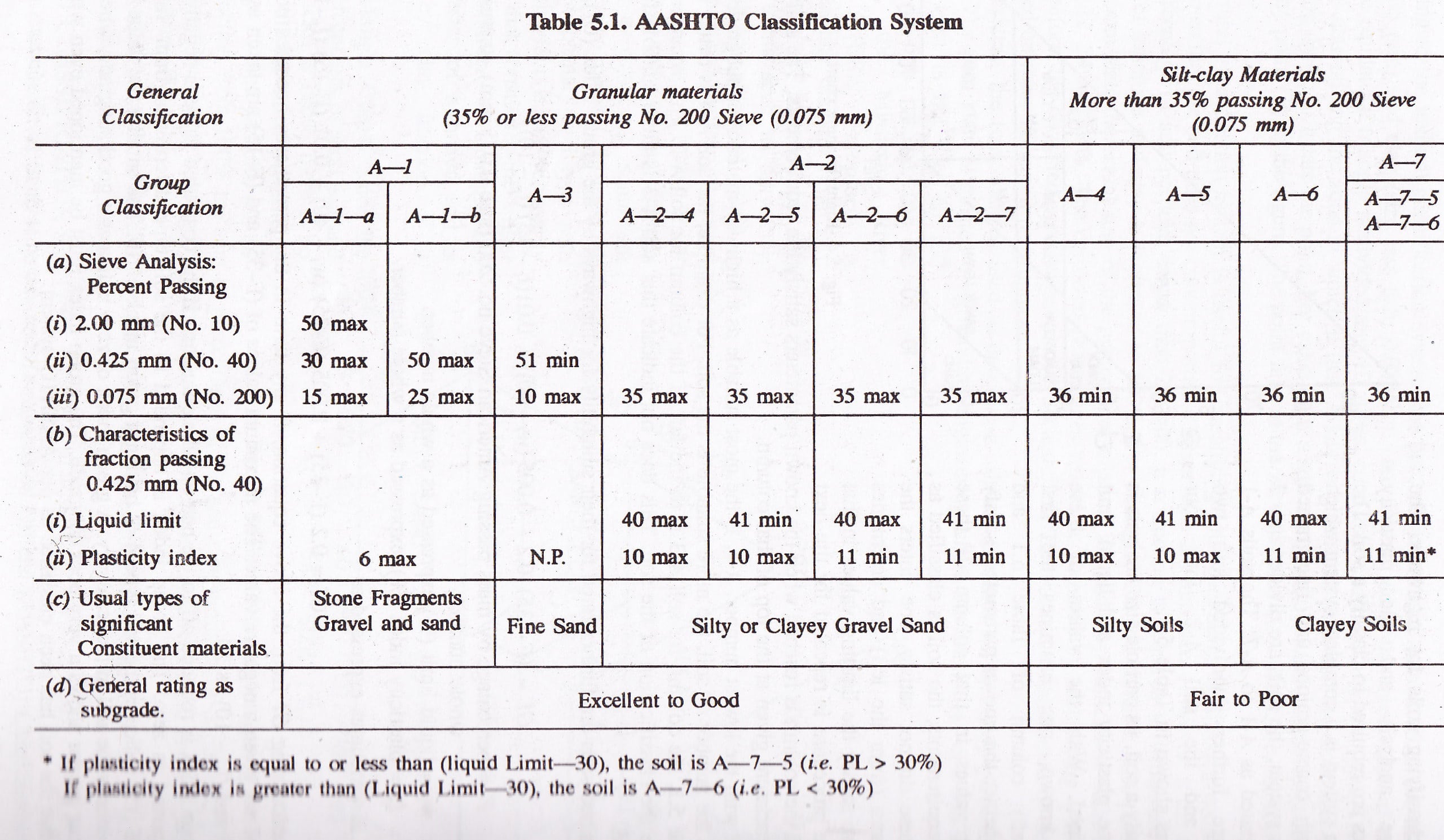
Besides Soil Classification on other criteria, the AASHTO Soil Classification System classifies soils into seven primary groups, named A-1 through A-7, based on their relative expected quality for road embankments, sub-grades, sub-bases, and bases. Some of the groups are in turn divided into subgroups, such as A-1-a and A-1-b. Furthermore, a Group Index may be calculated to quantify a soil’s expected performance within a group. To determine a soil’s classification in the AASHTO system, one first determines the relative proportions of gravel, coarse sand, fine sand, and silt-clay.
AASHTO Soil Classification System Chart
| General Classification | Granular Materials (35% or less passing the 0.075 mm sieve) | Silt-Clay Materials (>35% passing the 0.075 mm sieve) | |||||||||
|---|---|---|---|---|---|---|---|---|---|---|---|
| Group Classification | A-1 | A-3 | A-2 | A-4 | A-5 | A-6 | A-7 | ||||
| A-1-a | A-1-b | A-2-4 | A-2-5 | A-2-6 | A-2-7 | A-7-5 A-7-6 | |||||
| Sieve Analysis, % passing | |||||||||||
| 2.00 mm (No. 10) | 50 max | … | … | … | … | … | … | … | … | … | … |
| 0.425 (No. 40) | 30 max | 50 max | 51 min | … | … | … | … | … | … | … | … |
| 0.075 (No. 200) | 15 max | 25 max | 10 max | 35 max | 35 max | 35 max | 35 max | 36 min | 36 min | 36 min | 36 min |
| Characteristics of fraction passing 0.425 mm (No. 40) | |||||||||||
| Liquid Limit | … | … | 40 max | 41 min | 40 max | 41 min | 40 max | 41 min | 40 max | 41 min | |
| Plasticity Index | 6 max | N.P. | 10 max | 10 max | 11 min | 11 min | 10 max | 10 max | 11 min | 11 min | |
| Usual types of significant constituent materials | stone fragments, gravel and sand | fine sand | silty or clayey gravel and sand | silty soils | clayey soils | ||||||
| General rating as a subgrade | excellent to good | fair to poor | |||||||||
Note: Plasticity index of A-7-5 subgroup is equal to or less than the LL - 30. Plasticity index of A-7-6 subgroup is greater than LL - 30
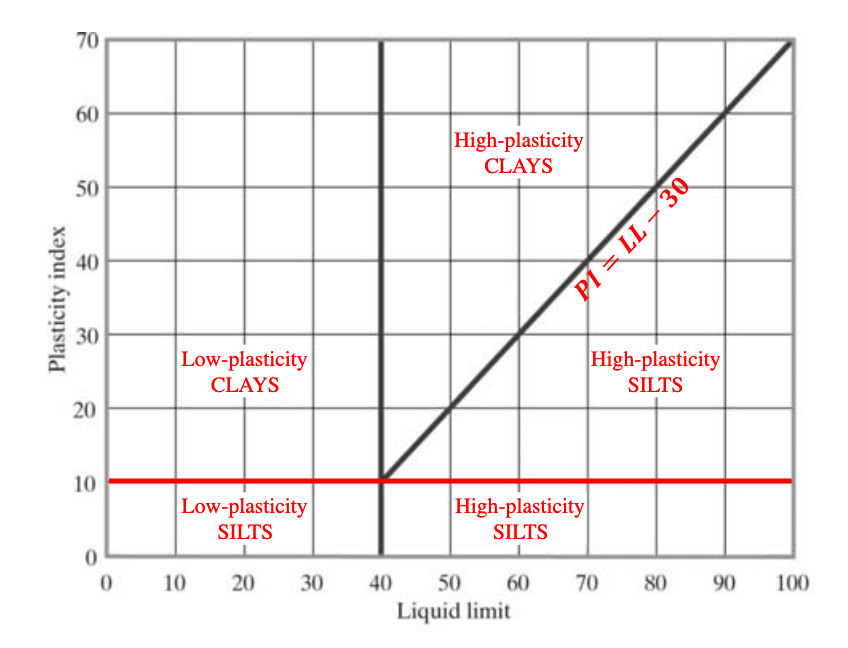
In the AASHTO Soil Classification System:
- gravel is material smaller than 75 mm (3 in.) but retained on a No. 10 sieve;
- coarse sand is material passing a No 10 sieve but retained on a No. 40 sieve; and fine sand is material passing a No. 40 sieve but retained on a No. 200 sieve.
- Material passing the No. 200 sieve is silt-clay and is classified based on Atterberg limits.
- It should be noted that the division between gravel and sand is made at a smaller size (No. 10 sieve) in the AASHTO Soil Classification System than in the unified system (No. 4 sieve).
Secondly, if any fines are present, Atterberg limits are determined and the plasticity index is calculated. A soil is a granular material if less than 35% of the soil by weight passes the No. 200 sieve (#200). Granular materials are classified into groups A-1 through A-3. Soils having more than 35% passing the No. 200 sieve are silt-clay and fall in groups A-4 through A-7. Having the proportions of the components and the plasticity data, one enters one of the two alternatives AASHTO classification tables and checks from left to right until a classification is found for which the soil meets the criteria. It should be noted that, in this scheme, group A-3 is checked before A-2. Soils classified as A-1 are typically well-graded mixtures of gravel, coarse sand, and fine sand. Soils in subgroup A-1-a contain more gravel whereas those in A-1-b contain more sand.
Soils in group A-3 are typically fine sands that may contain small amounts of non-plastic silt. Group A-2 contains a wide variety of “borderline” granular materials that do not meet the criteria for groups A-1 or A-3. Soils in group A-4 are silty soils, whereas those in group A-5 are high-plasticity elastic silt. Soils in group A-6 are typically lean clays, and those in group A-7 are typically highly plastic clays. Within groups containing fines, one may calculate a group index to further evaluate relative quality and supporting value of a material as sub-grade. The group index is calculated according to the following empirical formula:
Group index F 35 – ( )0.2 0.005 LL 40 – ( ) + [ ] + 0.01 F 15 – ( )PI 10 – ( )



